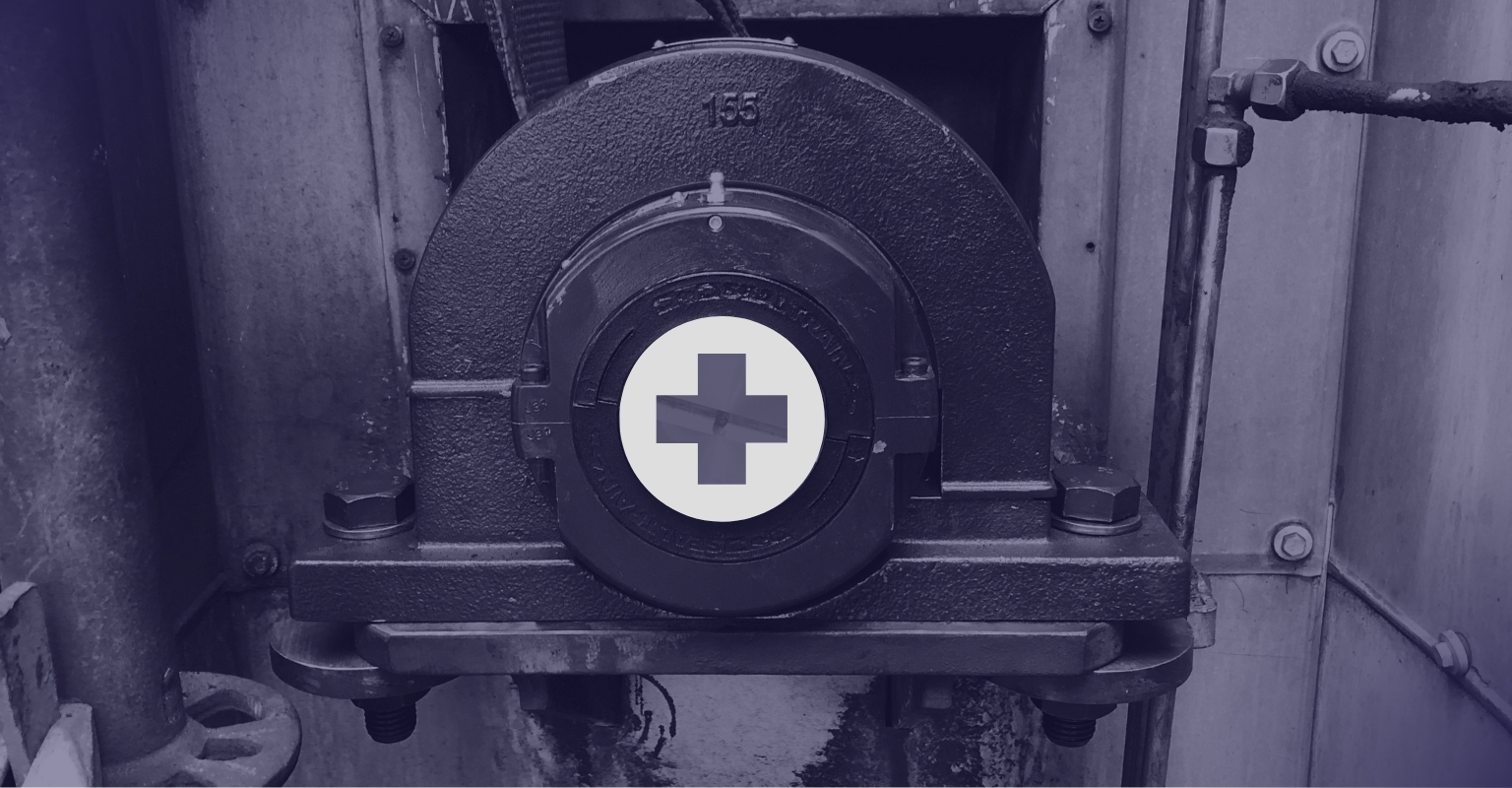Did you know that only 10% of industrial equipment can physically ‘wear out’ which means over 90% of mechanical failures are avoidable?1
The best way to avoid failures is of course predictive maintenance rather than reactive maintenance. In other words, spotting and trouble-shooting issues before they become a significant problem. Condition monitoring sensors are the most effective way to do this and can identify problems before they would be apparent to the human senses.
Condition monitoring is a worthwhile investment, but it isn’t something all businesses can afford right now. In the absence of data-driven maintenance, it’s important to conduct regular, effective bearing health checks to help prevent unplanned downtime.
Here’s a simple four-step process for bearing health checks if you don’t yet have condition monitoring:
Step one: Conduct a visual inspection
If your process allows for a brief planned break, carry out a visual check on the bearing. In the main, you are looking for visual wear characteristics on the raceways and rolling elements including fretting (discolouration) and spalling (peeling metal). Both of these could be signs of either poor lubrication, misalignment, poor fitting practice or fatigue. Whilst the shaft is running, check to see if there is visible movement of the housing. This would indicate looseness within the bearing brought on by the issues mentioned above.
Don’t forget to inspect the seal faces for an unconventional or excessive wear pattern, as well as the shaft face itself – is the shaft the same diameter where it contacts with the seal?
Take photos of your findings so you can compare them each time you inspect your bearing. This will help you identify any less obvious changes.
Step two: Listen for noises and monitor vibration
By listening to the bearing in operation, it’s possible to identify the presence of deterioration or damage. If the bearing is in optimal condition, it will produce a soft humming sound, but irregular or unusual sounds like squeaks or grinding could indicate a condition issue.
Listening to changes in vibration is also important, but it’s worth noting, that manual sound monitoring isn’t always effective for vibration management and digital vibration monitoring via sensors is a worthy investment. The onset of mechanical issues is almost always accompanied by an increase in vibration levels and the characteristics of the vibrations can indicate the type of fault at play.
Step three: Pay special attention to the grease
Incorrect lubrication, or the absence of grease altogether is one of the most common causes of bearing failure. When inspecting your bearings, pay special attention to whether the bearing is running dry, or whether the grease has discoloured or separated from excessive heat or vibration– this could be a sign of too much or too little grease. Likewise, the presence of too much grease can also cause serious trouble, especially in high speed applications – always use the manufacturer-recommended quantity and refer back to this during your inspections.
You may notice the grease looks like marmite, and you may smell carbon which means it has been burning.
Also check for lubricant leaks in the areas surrounding the bearing and ensure the labyrinth seals are filled with grease for maximum protection.
Just like in step one, take photos of your findings so you can draw accurate comparisons each time you inspect the bearing grease.
Step four: Monitor temperature during operation
Assuming the operating conditions haven’t changed, the temperature at bearing locations should remain consistent. An increase in temperature could be a sign of bearing damage and potentially imminent failure. Hand-held infrared thermometers are readily available, economical and can prove useful in spot-checking bearing temperatures.
That said, always remember that a rise in temperature is natural immediately after your initial machine power-up and after each fresh application of grease, and these increased temperatures can last a couple of hours.
Bonus step: Ask for support and guidance
Industry is evolving at a rapid rate as we try to increase output, quickly and cost effectively. In doing so, we’re putting our machinery under considerable pressure.
These new-found performance parameters are bound to impact the wear components of our equipment and bearing inspections may not always go to plan.
If you see, smell, hear or detect anything unusual, ask for help and guidance from your supplier so they can support you in avoiding unplanned downtime.

